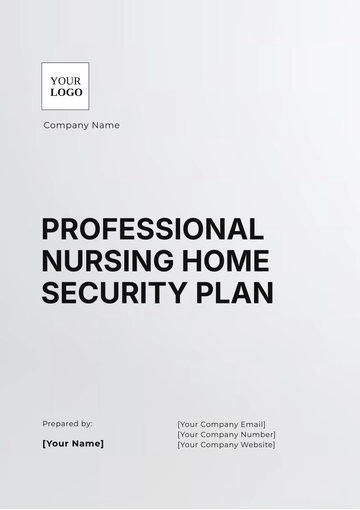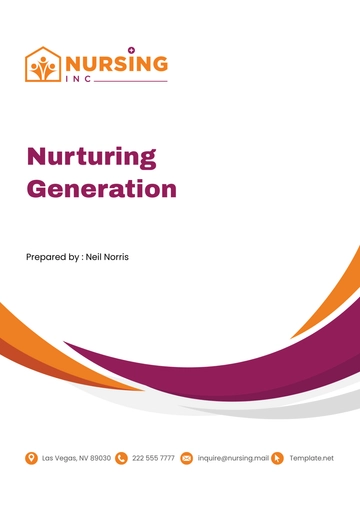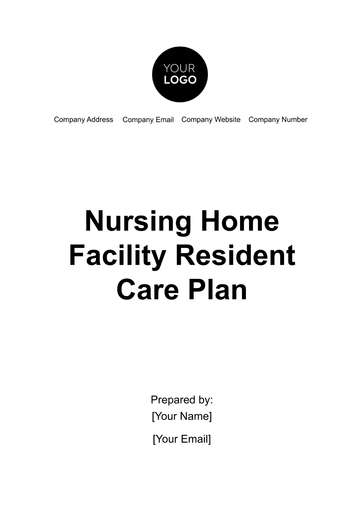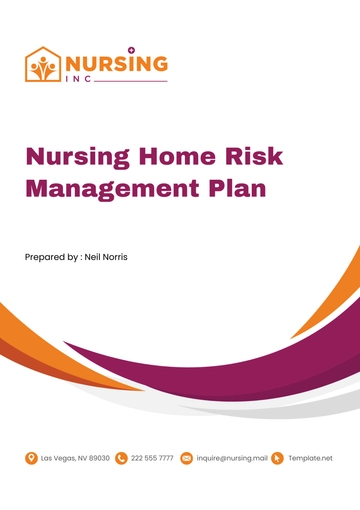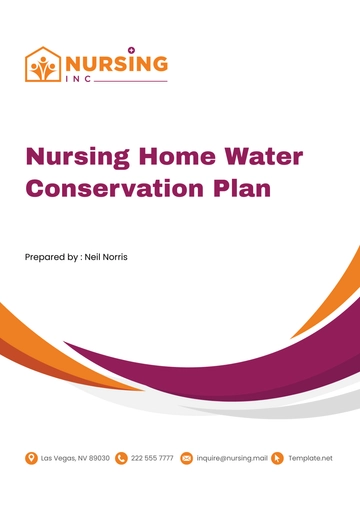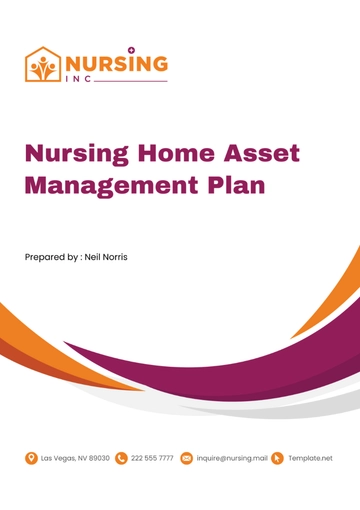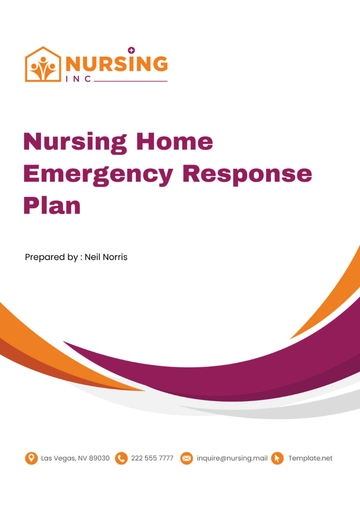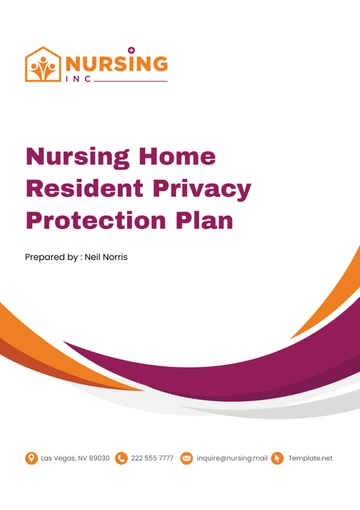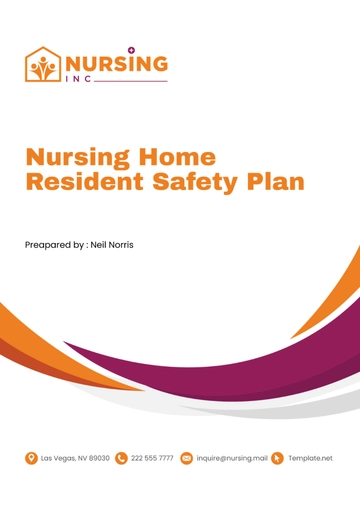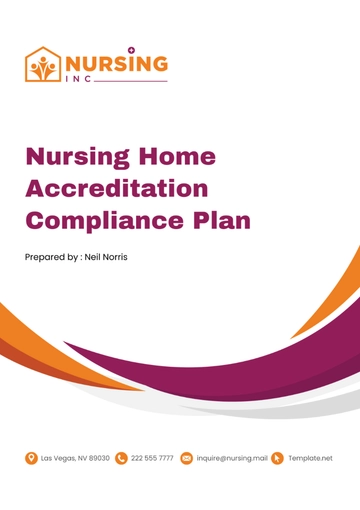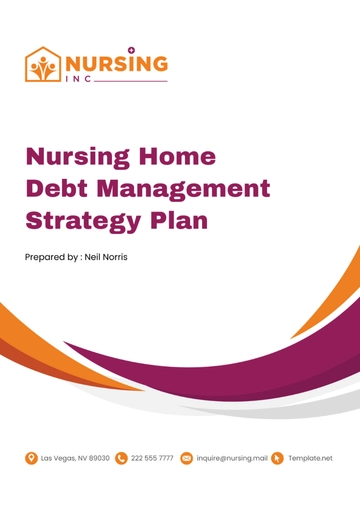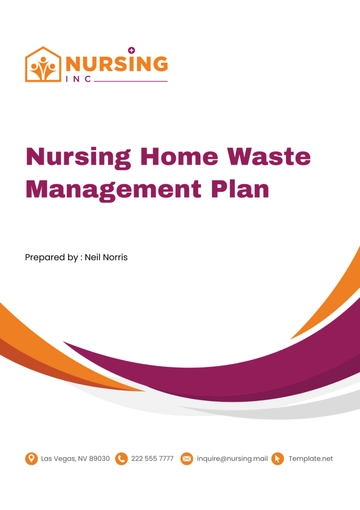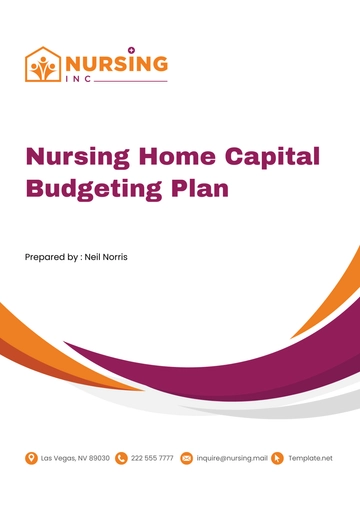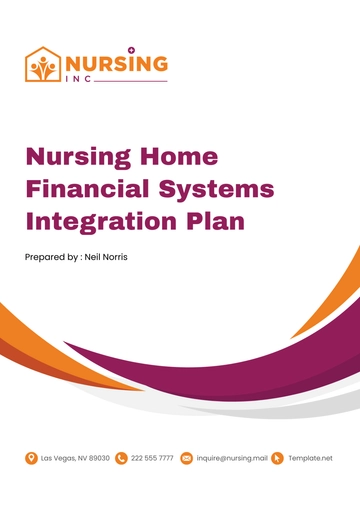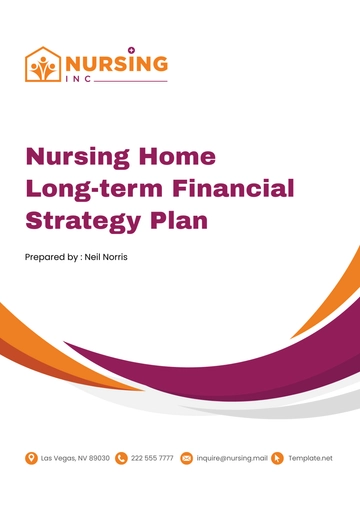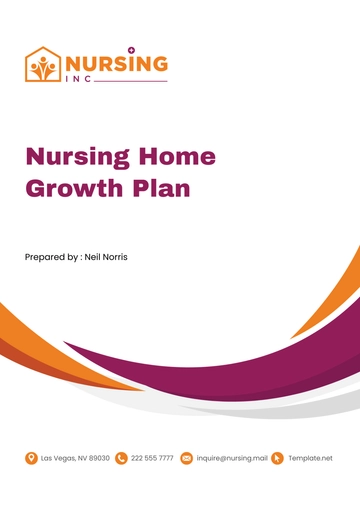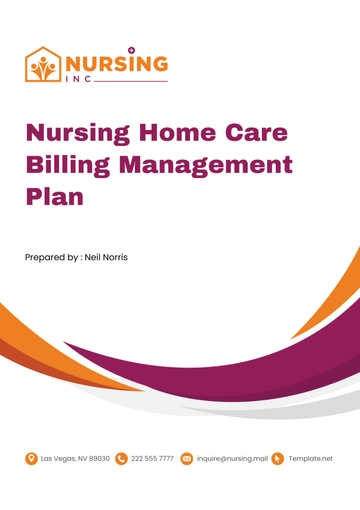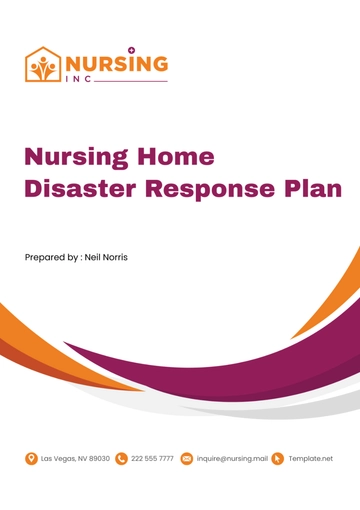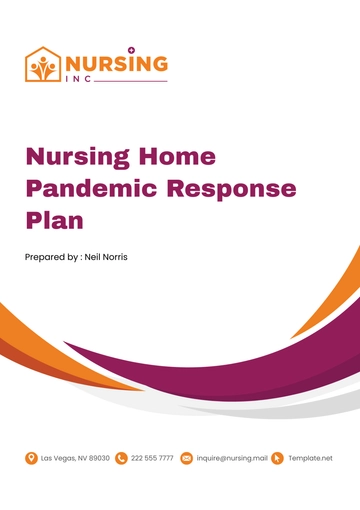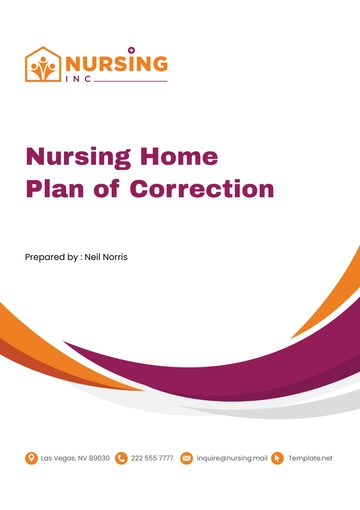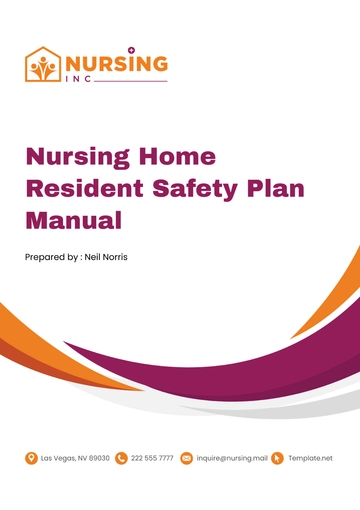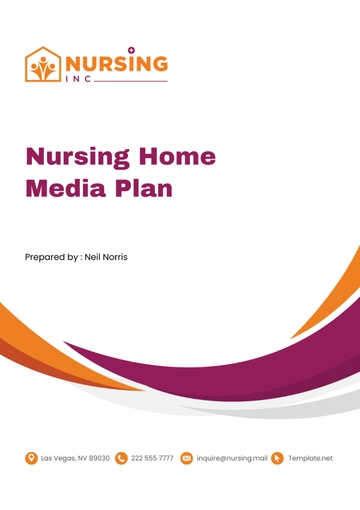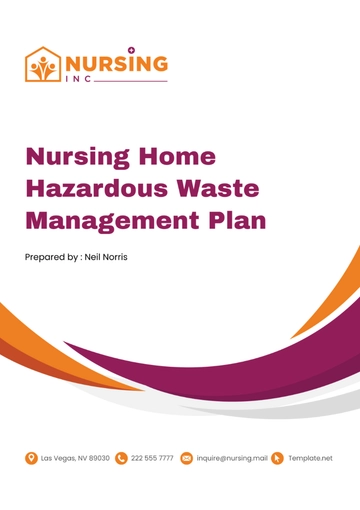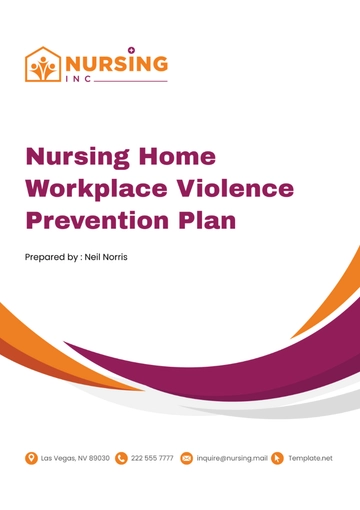Free Nursing Home Technology Integration Plan
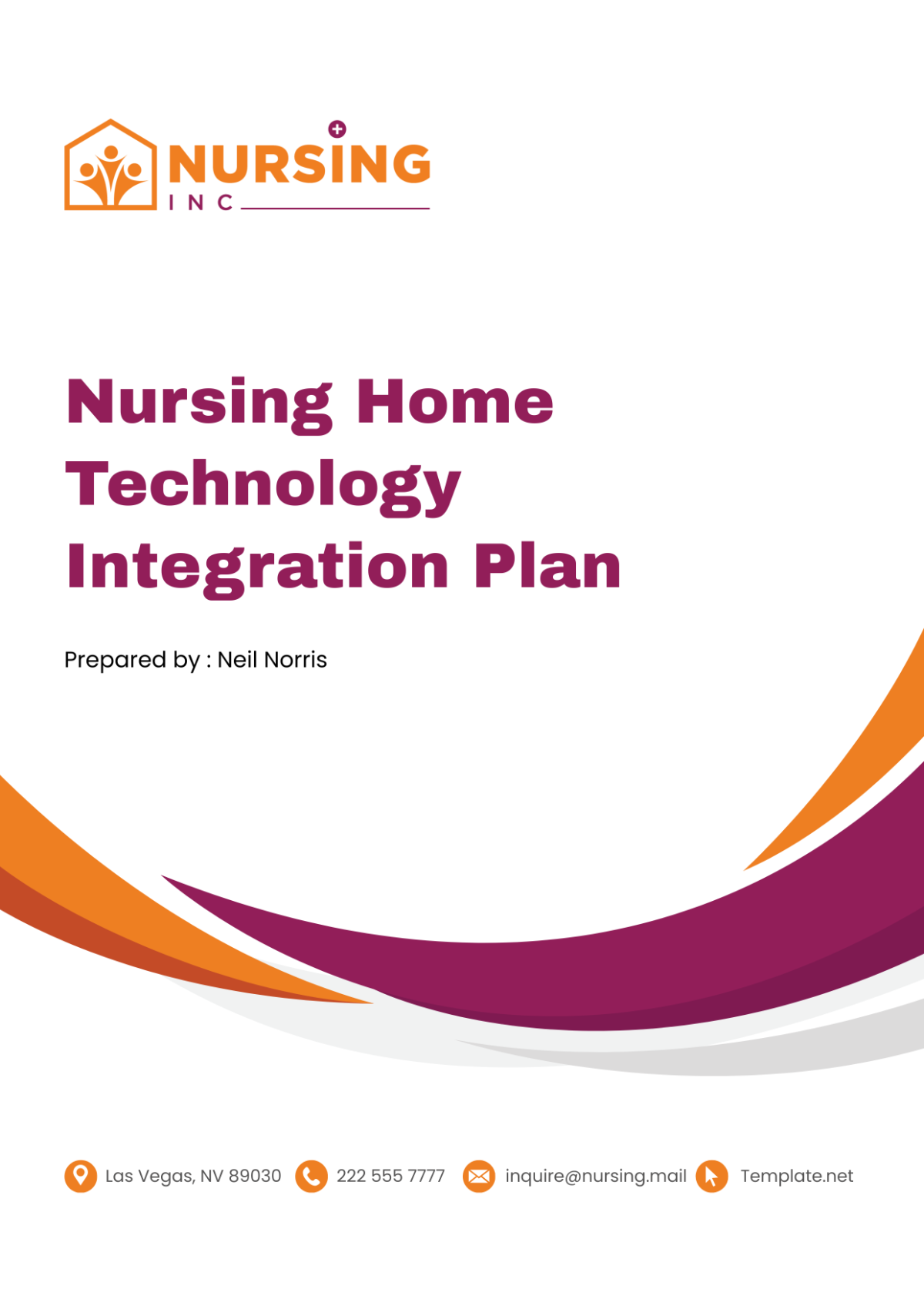
I. Introduction
Overview of [Your Company Name]
[Your Company Name] is a leading long-term care facility situated in [location]. With a profound commitment to compassionate care, we cater to a diverse resident population with varying healthcare needs. Our facility boasts a team of dedicated professionals who uphold the highest standards of care and strive to enhance the quality of life for our residents through innovative approaches.
Rationale for Technology Integration
In light of the dynamic healthcare landscape, the integration of technology has emerged as a pivotal strategy for enhancing resident care and optimizing operational efficiency. Embracing technological advancements allows us to streamline processes, foster effective communication, and ultimately elevate the overall resident experience. This integration aligns with our overarching goal of continuously improving our services and ensuring the well-being of our residents.
Objectives of the Technology Integration Plan
The primary objectives of our Technology Integration Plan encompass a multifaceted approach aimed at:
Enhancing the quality and effectiveness of resident care delivery.
Streamlining administrative processes to improve operational efficiency.
Strengthening communication channels among staff, residents, and families.
Ensuring compliance with regulatory standards and promoting data security.
Empowering our staff with the necessary tools and resources to excel in their roles and provide exceptional care.
II. Assessment of Current Technology Infrastructure
Evaluation of Existing Technology Infrastructure
Our current technology infrastructure comprises a range of hardware, software, and networking components. While we possess adequate hardware resources such as desktop computers and medical devices, there are areas requiring improvement, notably in software functionality and network reliability. Conducting a comprehensive evaluation enables us to identify strengths and weaknesses to inform our integration efforts effectively.
Strengths and Weaknesses
Aspect | Strengths | Weaknesses |
|---|---|---|
Hardware | - Adequate availability of devices. | - Aging equipment requiring maintenance or replacement. |
Software | - Established EHR system for resident record-keeping. | - Limited functionality for certain tasks (e.g., medication management). |
Networking | - Stable LAN infrastructure. | - Limited wireless coverage in certain areas. |
Our assessment reveals notable strengths, including a stable local area network (LAN) infrastructure and established software systems such as our electronic health records (EHR) platform. However, weaknesses, such as aging hardware and limited wireless coverage in certain areas, necessitate targeted interventions. Addressing these shortcomings is imperative to ensure seamless technology integration and optimal performance across all facets of our operations.
III. Needs Assessment and Goal Setting
Key Areas for Improvement
Following a thorough needs assessment, several key areas for improvement have been identified:
Resident Care: Enhancing health monitoring, medication management, and access to healthcare services.
Communication: Facilitating efficient communication among staff, residents, and families to improve engagement and coordination.
Operational Efficiency: Streamlining administrative processes and workflow management to optimize resource utilization and enhance productivity.
Compliance and Security: Ensuring adherence to regulatory standards and implementing robust data security measures to protect resident information.
Goal Setting
In line with our identified needs, we have established SMART goals to guide our technology integration efforts. These goals are specific, measurable, achievable, relevant, and time-bound, providing a clear roadmap for implementation and evaluation. By setting realistic objectives, we aim to drive meaningful improvements in resident care delivery and operational effectiveness.
IV. Technology Selection and Prioritization
Selected Technologies
Our technology selection process has culminated in the identification of several key solutions:
Electronic Health Records (EHR) System: [Vendor Name]
Telemedicine Platform: [Vendor Name]
Medication Management System: [Vendor Name]
Secure Messaging Platform: [Vendor Name]
These technologies have been carefully chosen based on their ability to address our identified needs and align with our organizational objectives, ensuring a comprehensive and cohesive approach to technology integration.
Rationale for Selection
Each selected technology solution offers unique benefits and functionalities that directly contribute to our overarching goals. For instance, the EHR system enhances data accessibility and documentation accuracy, while the telemedicine platform facilitates remote healthcare delivery, reducing the need for unnecessary hospital visits. By prioritizing these solutions, we aim to maximize their impact on resident care, staff efficiency, and organizational performance.
V. Implementation Plan
Timeline
A detailed implementation timeline has been developed to guide the rollout of each technology component. This timeline delineates specific milestones and deadlines for key implementation tasks, ensuring a structured and coordinated approach to deployment. By adhering to this timeline, we aim to minimize disruption to resident care activities and optimize the efficiency of our implementation efforts.
Resource Allocation
Effective resource allocation is critical to the success of our technology integration initiative. Accordingly, we have allocated budgetary resources for software licenses, hardware procurement, training programs, and implementation support. Additionally, staffing resources have been assigned to oversee implementation tasks, provide training, and offer ongoing support to staff members.
Equipment
Procurement of necessary hardware and medical devices is essential to support the functionality of our selected technology solutions. These may include devices such as tablets for accessing EHR systems, telemedicine peripherals for remote consultations, and barcode scanners for medication administration. By ensuring the availability of appropriate equipment, we can facilitate seamless integration and maximize the benefits of our technology investments.
Stakeholder Engagement
Engagement of key stakeholders, including administrators, department heads, frontline staff, residents, and families, is integral to the success of our implementation efforts. Throughout the process, stakeholders will be kept informed and involved through regular communication, feedback sessions, and opportunities for input. By fostering a collaborative approach, we aim to ensure alignment with organizational goals and promote a sense of ownership and commitment among all stakeholders.
VI. Staff Training and Support
Training Program
A comprehensive training program has been developed to equip staff members with the knowledge and skills needed to effectively utilize new technologies. Training sessions will cover various aspects of technology use, including system functionality, data entry procedures, and troubleshooting techniques. Multiple training modalities, such as in-person sessions, online modules, and hands-on workshops, will be employed to accommodate diverse learning styles and preferences.
Ongoing Support
In addition to initial training, ongoing support mechanisms will be established to assist staff members in navigating challenges and optimizing their use of technology. This support may include access to a dedicated helpdesk, user manuals, video tutorials, and peer mentoring programs. By providing readily accessible support resources, we aim to empower staff members to overcome obstacles and leverage technology to its fullest potential in their daily workflows.
VII. Integration with Existing Processes
Customization and Configuration
Efforts will be made to customize and configure new technologies to align seamlessly with existing workflows and processes within the nursing home. This may involve tailoring system settings, workflow automation, and user interface customization to optimize user experience and facilitate adoption. By minimizing disruptions and ensuring compatibility, we can promote smooth integration and acceptance among staff members.
Testing and Validation
Rigorous testing and validation procedures will be conducted to verify the functionality, interoperability, and reliability of integrated technologies. This may include conducting pilot tests, user acceptance testing (UAT), and interoperability testing to identify and address any issues or discrepancies. By subjecting technologies to thorough testing, we can mitigate risks and instill confidence in their ability to support resident care delivery and operational workflows.
VIII. Quality Assurance and Monitoring
Establishment of Quality Metrics
Key performance indicators (KPIs) and quality metrics will be established to monitor the effectiveness of technology integration efforts. These metrics may include measures of resident health outcomes, medication administration accuracy, staff productivity, and system uptime. By tracking performance against established benchmarks, we can identify areas for improvement and measure progress towards our goals.
Audits and Reviews
Regular audits and reviews will be conducted to assess compliance with regulatory standards, identify areas of non-compliance or inefficiency, and implement corrective actions as needed. This may include internal audits, external audits conducted by regulatory agencies, and periodic reviews of system logs and audit trails. By maintaining a proactive approach to quality assurance, we can ensure the integrity, security, and effectiveness of our technology systems.
IX. Privacy and Security Measures
Implementation of Security Protocols
To safeguard resident information and ensure compliance with privacy regulations, robust security protocols will be implemented across all technology systems. This may include access controls, encryption, data masking, and regular security updates to mitigate vulnerabilities and protect against unauthorized access or disclosure. By prioritizing data security, we can instill confidence among residents, families, and staff members in the confidentiality and integrity of their information.
Staff Training on Security Best Practices
Comprehensive training on security best practices and protocols will be provided to all staff members involved in handling resident information. This training will cover topics such as password management, data encryption, secure communication, and incident response procedures. By promoting security awareness and adherence to established protocols, we can minimize the risk of data breaches and protect sensitive information from unauthorized access or misuse.
X. Evaluation and Continuous Improvement
Evaluation of Technology Impact
The implementation of technology in our operations has a significant bearing and it is paramount that we persistently assess this impact. In order to accomplish this objective, it is essential that we gather feedback from various stakeholders. This category of interested parties encompasses a diverse group including but not limited to residents who utilize the technological applications, families who are indirectly impacted by these advancements, staff members who are tasked with the execution and maintenance of these systems, and other interested stakeholders who have a vested interest in our operations. There are a number of ways we can set about to collect the necessary feedback. For one, we can employ the use of surveys, which have long proven to be a viable means to assess a population's opinion on a given topic. We may also wish to consider the utilization of focus groups, which can garner a critical, qualitative evaluation of our technological integration. Looking into satisfaction scores can serve as a valuable insight into the overall happiness of our community with respect to the technology in place. Additionally, an examination of performance metrics can reveal the extent to which the employed technology either enhances or hinders our operational capabilities. By employing these evaluative mechanisms, and actively seeking out feedback from all interested parties, we place ourselves in a much stronger position to determine the overall effectiveness of our technology integration. Importantly, this will elucidate how successfully the technology in question meets the needs and expectations of our stakeholders, thus allowing us to continue developing and adapting our technological infrastructure in our commitment to serve all those who have a stake in our operations.
Refinement of Technology Integration Plan
Based on evaluation findings and stakeholder feedback, the Technology Integration Plan will be refined and updated to address emerging needs, challenges, and opportunities. This may involve revising implementation strategies, adjusting training programs, or exploring new technologies to enhance resident care and operational efficiency. By embracing a culture of continuous improvement, we can adapt to evolving circumstances and ensure that our technology solutions remain aligned with organizational goals and objectives.
XI. Conclusion
In conclusion, the Nursing Home Technology Integration Plan represents a comprehensive strategy for leveraging technology to enhance resident care, streamline operations, and foster a culture of innovation at [Your Company Name]. By implementing selected technologies, providing comprehensive training and support, and prioritizing privacy and security, we aim to achieve our overarching goal of delivering high-quality, resident-centered care in a safe and efficient manner. Through collaborative efforts and a commitment to continuous improvement, we are confident that our technology integration initiatives will contribute to the well-being and satisfaction of our residents, families, and staff members alike.
- 100% Customizable, free editor
- Access 1 Million+ Templates, photo’s & graphics
- Download or share as a template
- Click and replace photos, graphics, text, backgrounds
- Resize, crop, AI write & more
- Access advanced editor
Simplify your nursing home's technology integration with the editable Nursing Home Technology Integration Plan Template from Template.net. This customizable template offers a comprehensive framework for seamlessly incorporating innovative solutions. With the AI Editor Tool, tailor the plan to your facility's unique needs and objectives effortlessly. Streamline operations and enhance resident care with this user-friendly template.
You may also like
- Finance Plan
- Construction Plan
- Sales Plan
- Development Plan
- Career Plan
- Budget Plan
- HR Plan
- Education Plan
- Transition Plan
- Work Plan
- Training Plan
- Communication Plan
- Operation Plan
- Health And Safety Plan
- Strategy Plan
- Professional Development Plan
- Advertising Plan
- Risk Management Plan
- Restaurant Plan
- School Plan
- Nursing Home Patient Care Plan
- Nursing Care Plan
- Plan Event
- Startup Plan
- Social Media Plan
- Staffing Plan
- Annual Plan
- Content Plan
- Payment Plan
- Implementation Plan
- Hotel Plan
- Workout Plan
- Accounting Plan
- Campaign Plan
- Essay Plan
- 30 60 90 Day Plan
- Research Plan
- Recruitment Plan
- 90 Day Plan
- Quarterly Plan
- Emergency Plan
- 5 Year Plan
- Gym Plan
- Personal Plan
- IT and Software Plan
- Treatment Plan
- Real Estate Plan
- Law Firm Plan
- Healthcare Plan
- Improvement Plan
- Media Plan
- 5 Year Business Plan
- Learning Plan
- Marketing Campaign Plan
- Travel Agency Plan
- Cleaning Services Plan
- Interior Design Plan
- Performance Plan
- PR Plan
- Birth Plan
- Life Plan
- SEO Plan
- Disaster Recovery Plan
- Continuity Plan
- Launch Plan
- Legal Plan
- Behavior Plan
- Performance Improvement Plan
- Salon Plan
- Security Plan
- Security Management Plan
- Employee Development Plan
- Quality Plan
- Service Improvement Plan
- Growth Plan
- Incident Response Plan
- Basketball Plan
- Emergency Action Plan
- Product Launch Plan
- Spa Plan
- Employee Training Plan
- Data Analysis Plan
- Employee Action Plan
- Territory Plan
- Audit Plan
- Classroom Plan
- Activity Plan
- Parenting Plan
- Care Plan
- Project Execution Plan
- Exercise Plan
- Internship Plan
- Software Development Plan
- Continuous Improvement Plan
- Leave Plan
- 90 Day Sales Plan
- Advertising Agency Plan
- Employee Transition Plan
- Smart Action Plan
- Workplace Safety Plan
- Behavior Change Plan
- Contingency Plan
- Continuity of Operations Plan
- Health Plan
- Quality Control Plan
- Self Plan
- Sports Development Plan
- Change Management Plan
- Ecommerce Plan
- Personal Financial Plan
- Process Improvement Plan
- 30-60-90 Day Sales Plan
- Crisis Management Plan
- Engagement Plan
- Execution Plan
- Pandemic Plan
- Quality Assurance Plan
- Service Continuity Plan
- Agile Project Plan
- Fundraising Plan
- Job Transition Plan
- Asset Maintenance Plan
- Maintenance Plan
- Software Test Plan
- Staff Training and Development Plan
- 3 Year Plan
- Brand Activation Plan
- Release Plan
- Resource Plan
- Risk Mitigation Plan
- Teacher Plan
- 30 60 90 Day Plan for New Manager
- Food Safety Plan
- Food Truck Plan
- Hiring Plan
- Quality Management Plan
- Wellness Plan
- Behavior Intervention Plan
- Bonus Plan
- Investment Plan
- Maternity Leave Plan
- Pandemic Response Plan
- Succession Planning
- Coaching Plan
- Configuration Management Plan
- Remote Work Plan
- Self Care Plan
- Teaching Plan
- 100-Day Plan
- HACCP Plan
- Student Plan
- Sustainability Plan
- 30 60 90 Day Plan for Interview
- Access Plan
- Site Specific Safety Plan

